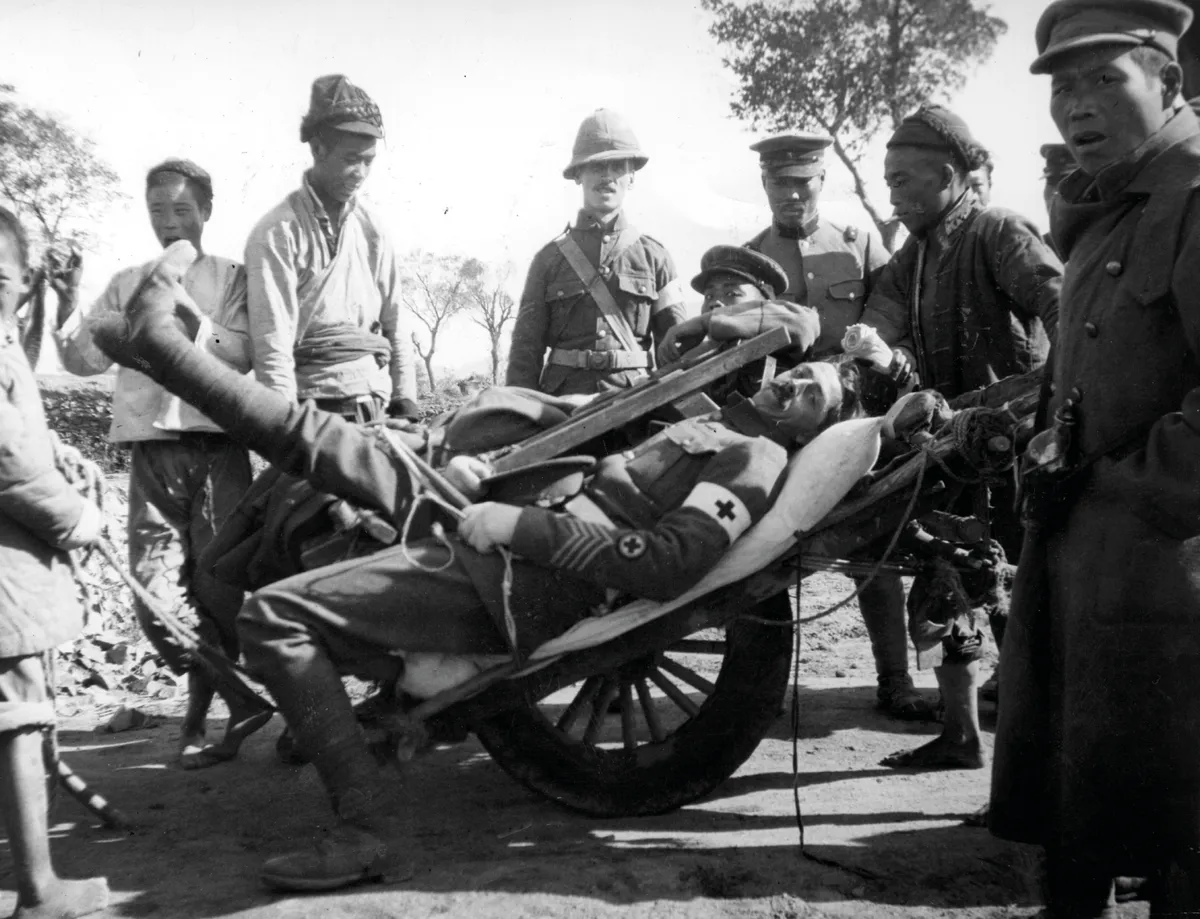The term ‘shell shock’ came into common use after Charles Myers, an English psychologist, used it in a paper on the subject published in 1915. The condition was diagnosed in British Army soldiers who’d fought in the First World War and was initially thought to be caused by physical injury to the nerves. As the war progressed, it became apparent that many suffered mental breakdown despite never having been near explosions, and experts began examining psychological factors.
Shell shock symptoms varied hugely. Some men were completely disabled by mutism and paralysis; others went blind or deaf. Some developed stutters and tics, or experienced nightmares, depression and disorientation. Others were overwhelmed by anxiety. Shell shock would now be known as post-traumatic stress disorder (PTSD).
How was shell shock treated?
Military authorities were often been reluctant to acknowledge shell shock, accusing those who broke down of malingering or cowardice. But as doctors sought to understand what caused the condition, a more enlightened attitude began to develop at home. Whereas once sufferers may have found themselves consigned to lunatic asylums, such places were now a last resort – to be used only if nowhere else could be found.
Hospitals specialising in the treatment of shell shock were set up, the best-known of which was Craiglockhart War Hospital in Edinburgh. It was here that Dr WHR Rivers – inspired by Freudian psychoanalysis – encouraged men to talk about what they had been through. Patients famously included the war poets Siegfried Sassoon and Wilfred Owen who, encouraged by his doctor, wrote his two most celebrated poems there, ‘Dulce et Decorum Est’ and ‘Anthem for Doomed Youth’.
Treatments for shell shock were as many and varied as the symptoms themselves, ranging from hypnotism to occupational therapy, and from cutting-edge electrotherapy to good old-fashioned music which helped restore speech.
Military authorities were often been reluctant to acknowledge shell shock, accusing those who broke down of malingering or cowardice
How many men suffered from shell shock?
During 1914–1918 the British Army dealt with 80,000 cases of shell shock, and by the end of the conflict an estimated 20,000 were still suffering from it. In 1921, some 65,000 men were still receiving disability pensions because of shell shock so disabling that it prevented them resuming normal life.

What was the impact on the families of shell shock victims?
It was the wives who often carried the burden at home – just as they had shouldered responsibility for their families during the war – and many a marriage must have come under strain. In a poignant recollection recorded for the Imperial War Museums Sound Archive, shell shock victim Thomas Olive recalled: “I used to have little breakdowns now and then and my wife used to be very frightened. It more or less used to happen at night, when I was in bed. I used to spring up off the bed... it used to frighten her. My daughter, incidentally, is terribly nervous, she’s terribly nervous. My wife says it’s all my fault. Well I had shell shock... I got blown up, you see, and it affected my whole system.”
Mothers, too, had to steel themselves when sons returned home mentally broken. Bristol Archives have a letter written by Margaret Watson-Williams whose son, Guthrie, was admitted to Craiglockhart in 1917. She journeyed up to Scotland to bring him home, and her fear for the future is palpable in the words she wrote to her daughter: “When I arrived he could talk but only with an awful stutter. He is still like that, quite jolly but looks awful, years older and so white with an awful hunted look... We leave here at 9am, and reach Bristol at 8.11, awful journey, I dread it as he is very knocked over.”
What was the impact of shell shock on society?
The sad plight of men like these brought gloom to a country already weighed down by unemployment, strikes, and cuts in public spending that were brought in to curb inflation. Petty crime, too, was rife, and a scroll through the old newspapers on the British Newspaper Archive website (also available on Findmypast) reveals just how often shell shock was blamed for changing respectable men into petty criminals (or worse): thieves, vagrants – even bigamists.
However, not everyone was convinced. In 1924 a Glasgow court sheriff presided over the case of a 26-year-old man accused of stealing £17 from a Salvation Army hostel. “It was thought the accused’s turning to crime was caused by shell shock,” the court was told. But the sheriff believed otherwise. “In passing sentence of six months, with hard labour, Sheriff Blair said he had never discovered that shell shock made a man a thief,” reported the Dundee Courier.







